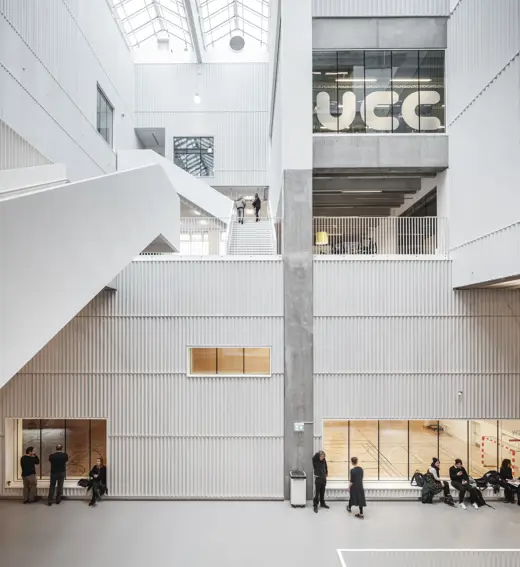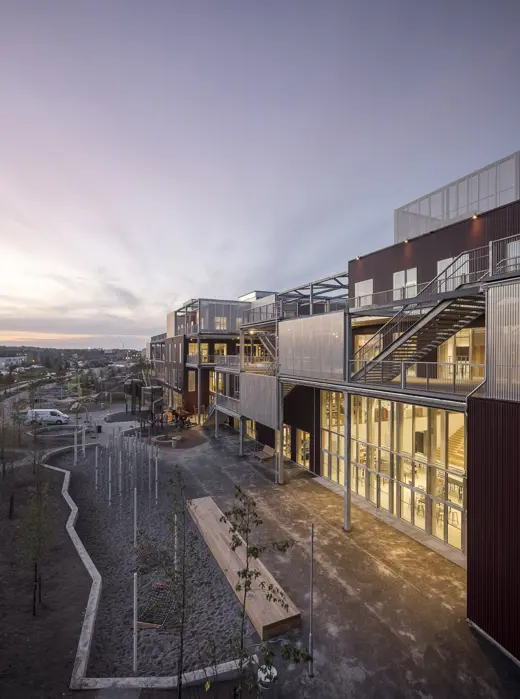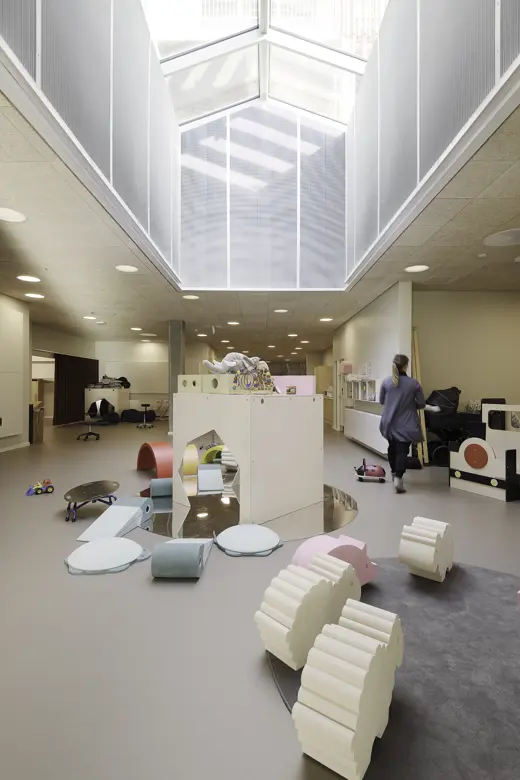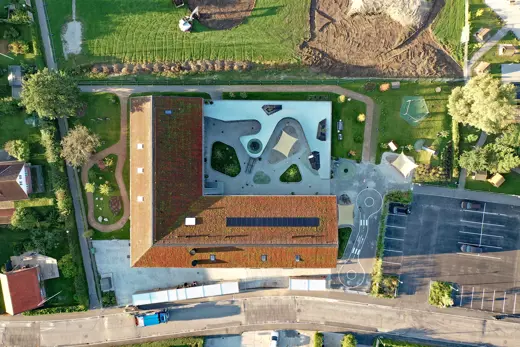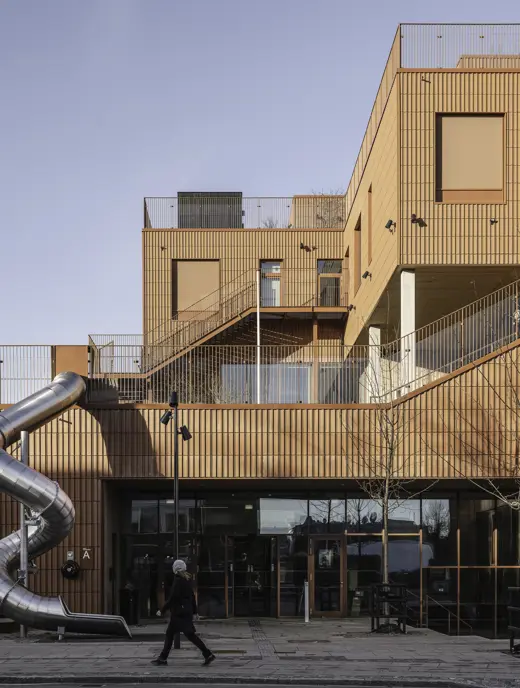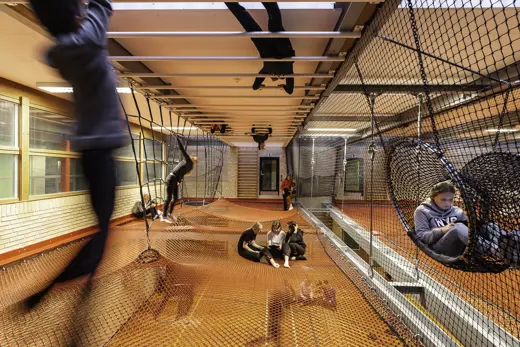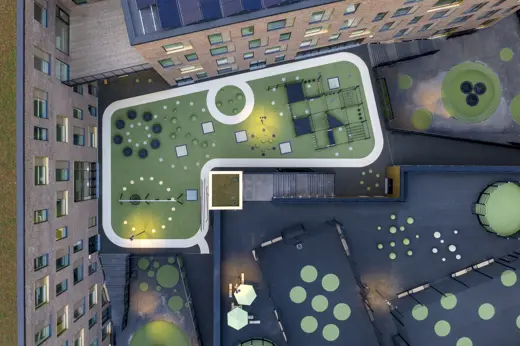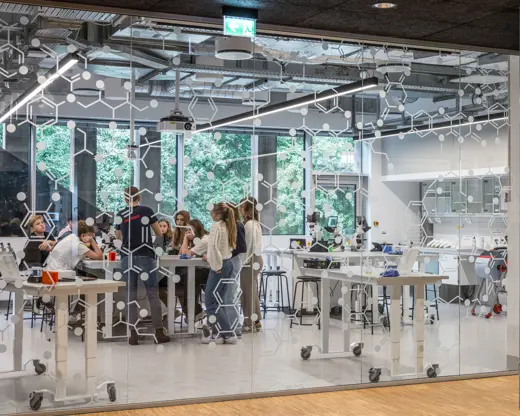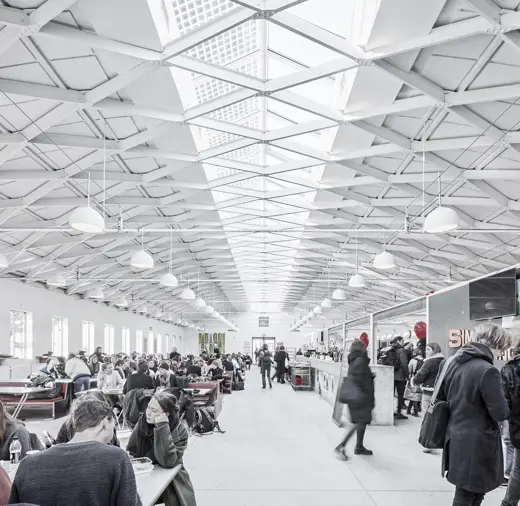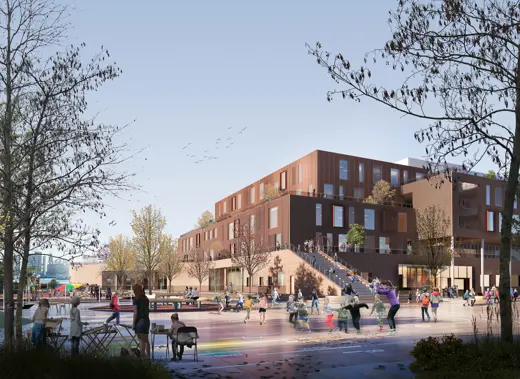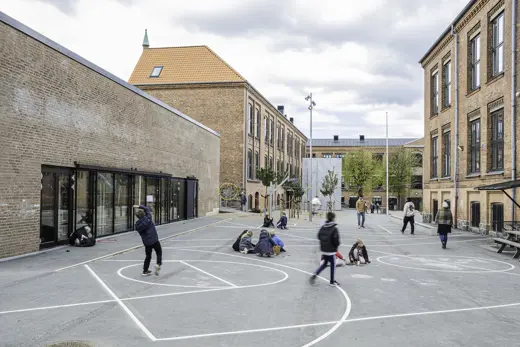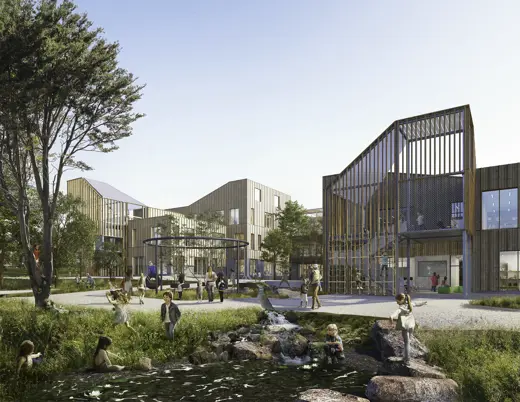1. School as a catalyst for change
”The Children & Cultural Center“ voted Denmark‘s best school building in 2023. Located in Høje Taastrup the project is a central part of the development of the Taastrupgård neighbourhood, which will eventually be transformed from an isolated, monofunctional and vulnerable residential area into a safe and vibrant urban neighbourhood. Selected apartment blocks have been demolished to make way for the school, which forms a new central gathering place in the neighbourhood.
This is the first time in Denmark that daycare, school, after-school centres, and cultural activities are gathered under the same roof so that students encounter art and culture as a natural part of their everyday lives. The architectural concept of the Children and Culture Centre reflects the school‘s public programme with an open and inviting lower floor with daycare, sports facilities, workshops, and canteen and a more secure and sheltered learning environment on the upper floors.
2. Attractive outdoor areas in the city
The European School Copenhagen is an international public school, which accommodates around 900 students from 0. class to senior year (3. G.). The project is built in the middle of the historic Carlsberg City with preservation-worthy neighbours such as The Elephant Tower, The Machine Centre, and The Winding Chimney. The unique qualities of the neighbourhood have been incorporated into the project, which has been developed to create an exciting and harmonious dialogue between old and new. The school‘s programme is carefully integrated into the limited site area of the context, where a well-defined block structure shields an attractive and varied roof landscape behind, where all surfaces are used as active outdoor areas for play, learning and sports for the students but also the locals.
3. Center for creativity, communication and critical thinking
The Learning Center in Høje Taastrup functions as a five-track learning centre (primary school) with integrated leisure facilities and houses both a daycare centre and a sports hall. Age-specific learning environments are designed with a focus on supporting 21st Century Learning Skills: creativity, communication, critical thinking, and collaboration. The architecture breaks away from traditional classroom teaching in favour of more open and varied learning environments that empower children to experiment with creating solutions to concrete societal problems.
“The school is a learning center with workshops, research laboratories and communication zones.” Says Liv Bach Henriksen.
The learning centre is designed with a variety of makerspaces (workshops), fab labs (subject labs) and communication zones (presentation) with varying degrees of transparency and technical/subject-related furniture and equipment so that the individual rooms clearly signal the intended function - here the space actively functions as the “3rd pedagogy”.
4. Transformation – the interaction between new and old
Tagensbo School in Copenhagen is a transformation and extension of the former Grundtvig School on Bispebjerg. The school houses a contemporary and modern three-track school
with a new multi-purpose hall and catering school. The original auditorium has been reactivated as a new academic gathering point with a pedagogical learning centre (library), while the old gymnasiums have been redesigned for creative workshops.
Classic classrooms are reworked with bay windows and visual contact with the wide corridors, which are utilised for group work in new, deep window niches in the facade. The modernist architecture of the original school has been preserved and optimised in interaction with a new, modern three-storey extension. The extension houses a canteen, culinary school and staff facilities and an open multi-purpose hall with transparent facades that serve as the school‘s new face to the outside world.
Workshops for lifelong learning
By focusing on organisation, functionality and design engineering solutions, Vilhelm Lauritzen Architects, Kjaer & Richter Architects shape each learning and teaching building for exactly the purpose it is intended to serve. The architects‘ main task is to create sustainable “workshops” for lifelong learning. As a team they provide the framework for ‘pedagogy and learning’ by designing the buildings from the inside out to secure users with the best conditions for developing their pedagogical practice.
